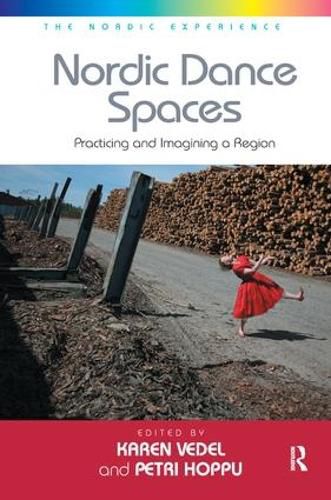Readings Newsletter
Become a Readings Member to make your shopping experience even easier.
Sign in or sign up for free!
You’re not far away from qualifying for FREE standard shipping within Australia
You’ve qualified for FREE standard shipping within Australia
The cart is loading…






Dance has been connected to the practices and ideologies that have shaped notions of a Nordic region for more than a century and it is ingrained into the culture and society of the region. This book investigates different dance phenomena that have either engaged with or dismantled notions of Nordicness. Looking to the motion of dancers and dance forms between different locations, organizations and networks of individuals, its authors discuss social dancing, as well as historical processes associated with collaborations in folk dance and theatre dance. They consider how similarities and differences between the Nordic countries may be discerned, for instance in patterns of reception at the arrival of dance forms from outside the Nordic countries - and vice versa, how dance from the Nordic countries is received in other parts of the world, as seen for example in the Nordic Cool Festival at the Kennedy Centre in 2013.
The book opens a rare window into Nordic culture seen through the prism of dance. While it grants the reader new insights into the critical role of dance in the formation and imagining of a region, it also raises questions about the interplay between dance practices and politics.
$9.00 standard shipping within Australia
FREE standard shipping within Australia for orders over $100.00
Express & International shipping calculated at checkout
Dance has been connected to the practices and ideologies that have shaped notions of a Nordic region for more than a century and it is ingrained into the culture and society of the region. This book investigates different dance phenomena that have either engaged with or dismantled notions of Nordicness. Looking to the motion of dancers and dance forms between different locations, organizations and networks of individuals, its authors discuss social dancing, as well as historical processes associated with collaborations in folk dance and theatre dance. They consider how similarities and differences between the Nordic countries may be discerned, for instance in patterns of reception at the arrival of dance forms from outside the Nordic countries - and vice versa, how dance from the Nordic countries is received in other parts of the world, as seen for example in the Nordic Cool Festival at the Kennedy Centre in 2013.
The book opens a rare window into Nordic culture seen through the prism of dance. While it grants the reader new insights into the critical role of dance in the formation and imagining of a region, it also raises questions about the interplay between dance practices and politics.